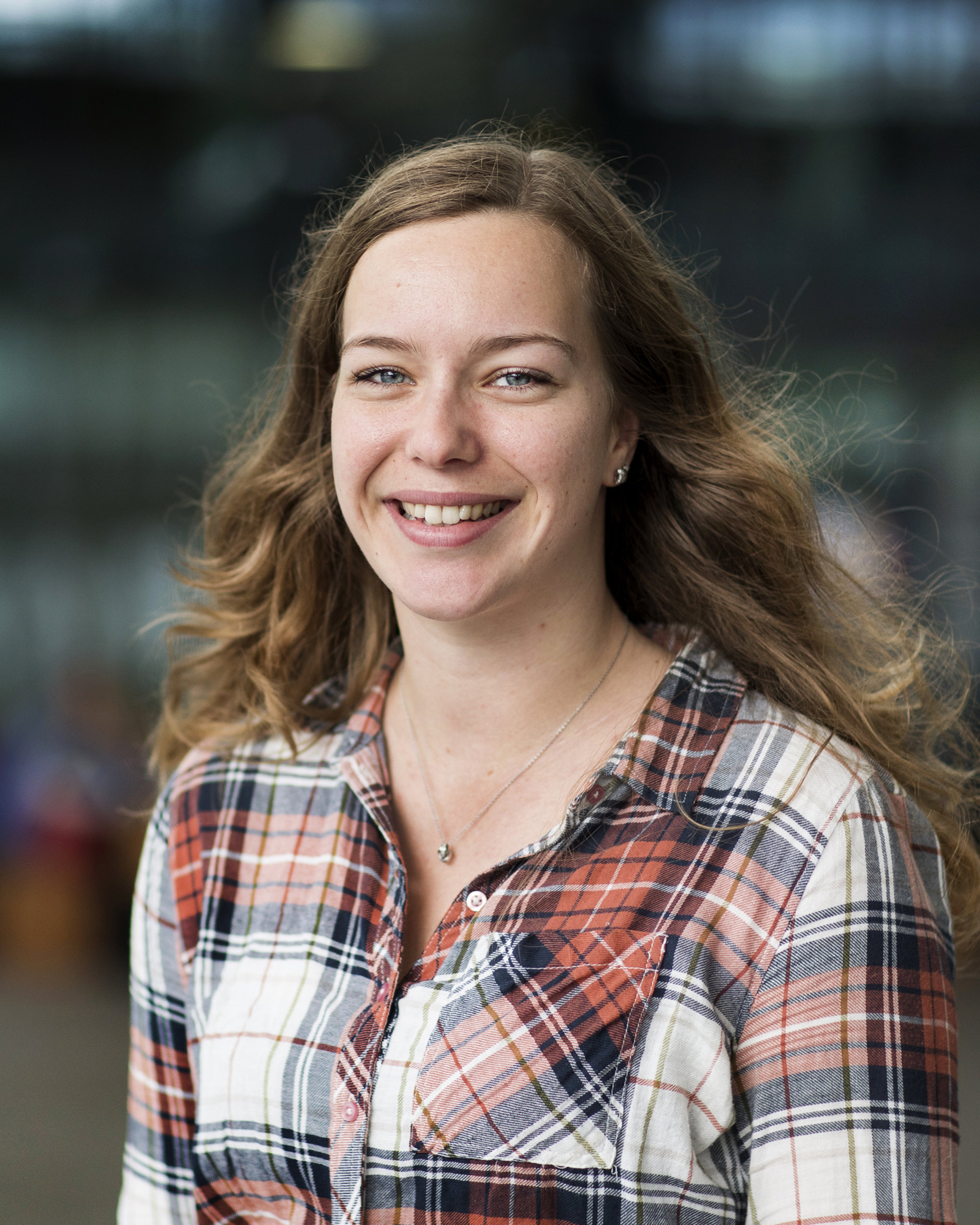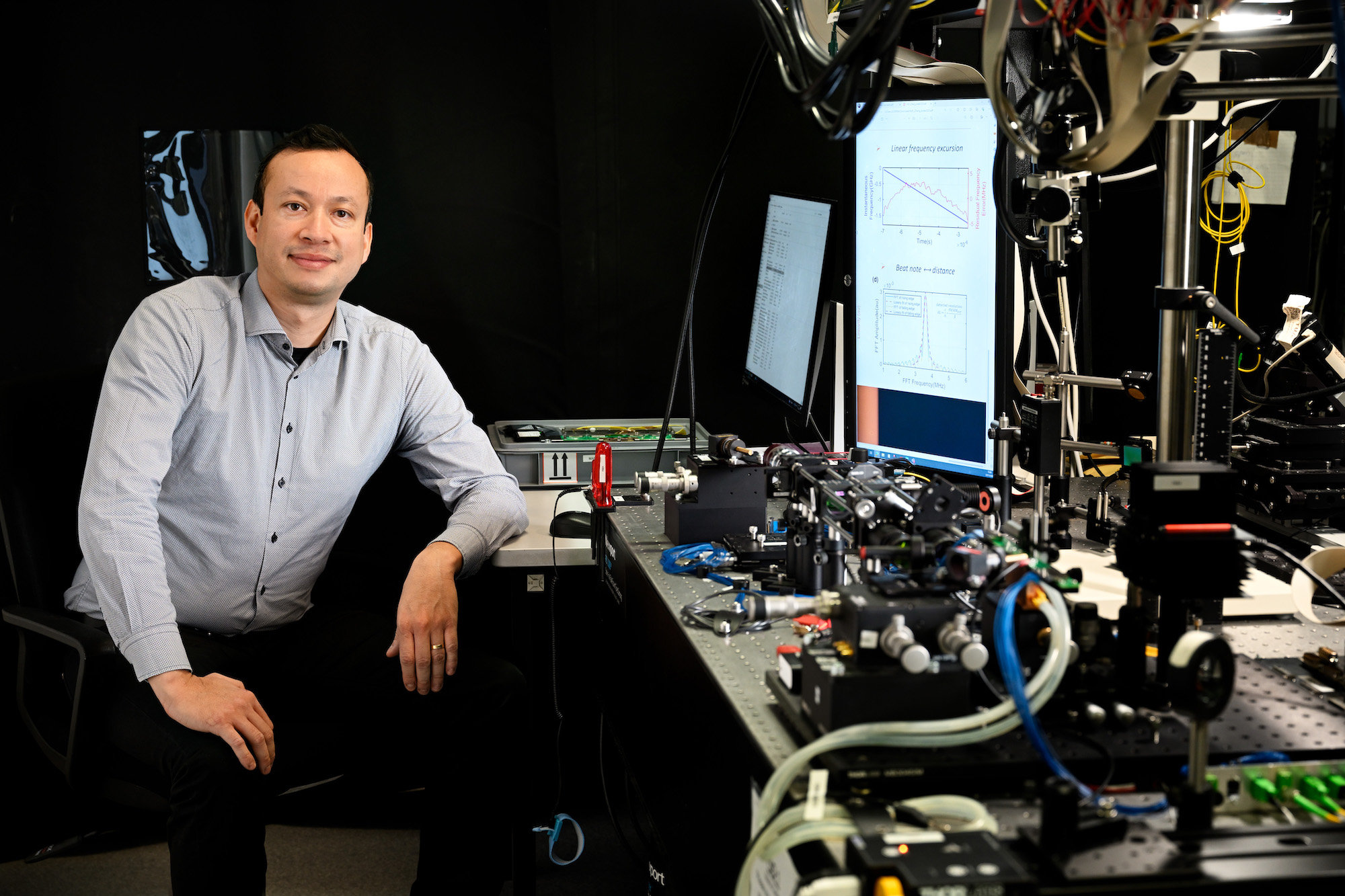Research highlight
Towards LiDAR on a single chip
LiDAR, Light Detection and Ranging, is a well-known technology that uses laser light to make 3D maps or models of objects. Scaling it down to an on-chip system that is not only able to see objects, but also to determine their speed on the fly, is another ball game though. TU/e is working on different aspects of the technology, with LiDAR enabling autonomous cars to sense their environment as the dot on the horizon, tells Victor Calzadilla.
Photonic chips with optical phased arrays for solid-state beam steering. The chips were designed by doctoral candidate Marco Gagino and fabricated by SMART Photonics.
The essential idea behind LiDAR of determining distance by using light and measuring how long it takes to return, is already some hundred years old. It was in the thirties of the previous century that Edward Hutchinson Synge proposed to use searchlights to probe the atmosphere. With the invention of the laser in the sixties, LiDAR evolved into a technology that is now commonly used in a wide variety of fields, ranging from mining and meteorology to city planning.
‘Current LiDAR systems however are rather bulky,’ comments Calzadilla. This motivates research into LiDAR on chip. ‘By using integrated photonics technology, we can make much more compact versions, opening up vast new worlds of possible applications.’ Advantages of semiconductors based miniaturization are not only to be expected in terms of size or production costs, but also in terms of reliability, he stresses. ‘Traditional mirror-based systems are very sensitive to mechanical vibrations. When you integrate all of the LiDAR components on a single chip, vibrations are expected not to be an issue at all.’

"We acknowledge that the transition towards quantum secure networks has to be a gradual one"
Idelfonso Tafur Monroy | Founding father of this testbed
Technical challenges
A LiDAR system basically consists of three components, all of which come with their own challenges, the assistant professor in electrical engineering lectures. ‘You need a laser or transmitter, a scanner, and a receiver. As far as the laser goes, we need to develop high power lasers with sufficient coherence. Since we are ultimately aiming for a system that can be used for mapping the surroundings of automated cars in 3D, we need lasers that are able to sense objects up until 300 meters ahead, and the scattered light has to come back and still be coherent.’
For the detection part, the challenge is to come up with a solution that is both sensitive to very weak signals, and at the same time is immune to other LiDAR systems that might be around. ‘Immunity to interference can be achieved by means of coherent sensing’. But perhaps the biggest challenges are in the scanner part. ‘A traditional LiDAR scanning system uses moving mirrors to scan the environment. In an integrated photonic chip, these mirrors are replaced by an optical phase array; basically an array of antennas that can control their phase individually and send the beam in a specific direction. Implementing scanning in one direction is straightforward, but adding the second direction with sufficient angular scanning range and resolution is a real brain teaser,’ he says. ‘Furthermore, the calibration of the array itself is another interesting challenge’, he adds.
Fortunately, the researchers did not have to start from scratch. ‘Our partner SMART Photonics has an integrated photonics platform that contains all of the basic building blocks for photonic integrated chips. We now collaborate to improve their integration density and performance to make them suitable for high-end LiDAR applications.’

"A traditional LiDAR scanning system uses moving mirrors to scan the environment. In an integrated photonic chip, these mirrors are replaced by an optical phase array”
Victor Calzadilla | Assistant Professor
Take-off
While automated driving is the dot on the horizon, some other milestones have been defined on the way there. ‘In the EU funded project NewControl, we first aimed at avionics. In that project, we had nice progress, especially when it comes to the laser and the phase array. For example, we have demonstrated optical phase arrays with amplification, which is of great importance for increasing ranging. We also demonstrated proof-of-principle LiDAR sensing in our lab. Our efforts are complemented by the PhotonDelta Growth Fund which has provided additional funds to consolidate our research. Moreover, we obtained an NWO Take Off grant to explore how LiDAR on chip can get out of the lab’.
Calzadilla sees ample opportunities of extending the technology itself. ‘At the moment, LiDAR is mainly used to make a 3D map of the environment. You scan the laser beam in a 2D grid and measure the distance. But it is possible to also measure the velocity of a specific target through the Doppler effect using a frequency-modulated continuous-wave (FMCW) implementation. And in the future, I can imagine multiparameter LiDAR sensing. By measuring the reflectivity of a target we get a first idea of what it might be. And by measuring at different wavelengths, you could even obtain a spectral image. All in all I think that it will be possible to use LiDAR to determine fast and accurately what it is that you are approaching, and how fast.’
Though LiDAR on chip is a rather new field, the researcher is convinced that TU/e will be able to make an impact on its development. ‘We are well-positioned to expand our research and further develop this technology to maturity, both with our expertise in monolithic indium phosphide photonics, and with the support of the PhotonDelta ecosystem that can help bring our ideas out of the laboratory.’